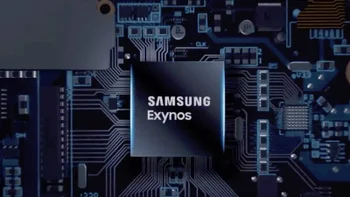Exynos 2500 could be more efficient than Snapdragon 8 Gen 4 thanks to use of GAA transistors

The Exynos 2400 application processor (AP) is a pleasant surprise and features a deca-core CPU. It also offers hardware-accelerated ray tracing delivering more realistic lighting effects in video games such as shadows, reflections, refractions, highlights, and bounced light. Geekbench tests showed that the Exynos 2400 SoC is nearly as powerful as the Snapdragon 8 Gen 3 SoC.
In 2023, all Galaxy S23 models were equipped with the Snapdragon 8 Gen 2 for Galaxy chipset. Samsung did not mass-produce the Exynos 2300. This year, with the Exynos 2400 capable of driving a flagship line, Samsung used the AP on the Galaxy S24 and Galaxy S24+ in most markets except for the U.S. and China. In those countries, the two models were powered by the Snapdragon 8 Gen 3 for Galaxy. The latter chip was also used on all Galaxy S24 Ultra units regardless of where they were sold.
Per Wccftech, Samsung will employ a similar strategy for next year's Galaxy S25 flagship series. That means we should expect the Exynos 2500 AP to be found inside the Galaxy S25 and Galaxy S25+ in all markets except for the U.S. and China. In those countries, we'd expect the Snapdragon 8 Gen 4 for Galaxy AP to be powering those models. The same chip should be found under the hood of all Galaxy S25 Ultra units.
The Exynos 2400 SoC is built by Samsung Foundry using its 4nm node. The early rumors say that the Exynos 2500 SoC will be manufactured by Samsung Foundry using its second-generation 3nm process node. An "X" leaker known by the username of PandaFlash says that thanks to the second-generation 3nm node used by Samsung Foundry to produce the Exynos 2500, the AP will be more energy efficient than the Snapdragon 8 Gen 4, which will probably be made using TSMC's second-gen 3nm node.

Leaker says that the Exynos 2500 SoC will be more energy-efficient than the Snapdragon 8 Gen 4 SoC
Is there such a big difference between Samsung Foundry's second-gen 3nm node and TSMC's second-gen 3nm node that will allow the Exynos 2500 SoC to be more energy-efficient than the Snapdragon 8 Gen 4 SoC? Absolutely there is! The difference is that Samsung's second-gen 3nm node uses Gate-All-Around (GAA) transistors which means that the gate wraps around the channel on all four sides. This limits leaks and increases the drive current.
TSMC won't use GAA transistors until it starts producing at 2nm starting in the second half of next year. Until then, its second-gen 3nm chips will continue to use FinFET transistors even on APs like the upcoming Snapdragon 8 Gen 4, and the A18 Pro and the A18 Bionic which will be used on the iPhone 16 Pro series and the non-Pro iPhone 16 models respectively. FinFET transistors allow the gate to cover only three channels.
There have been reports that the Snapdragon 8 Gen 4 chipset is having power consumption issues forcing manufacturers to use larger 5500mAh batteries to compensate for the problem. Not that the Exynos 2500 chipset is guaranteed to be problem free. Samsung's problem in the past has been low yields. Previously, Samsung Foundry had a poor 20% yield for 3nm production. Samsung Foundry has supposedly hiked its yield to 60% which is a major improvement if true.
The Exynos 2500 and Snapdragon 8 Gen 4 won't be introduced until later this year.










Things that are NOT allowed: